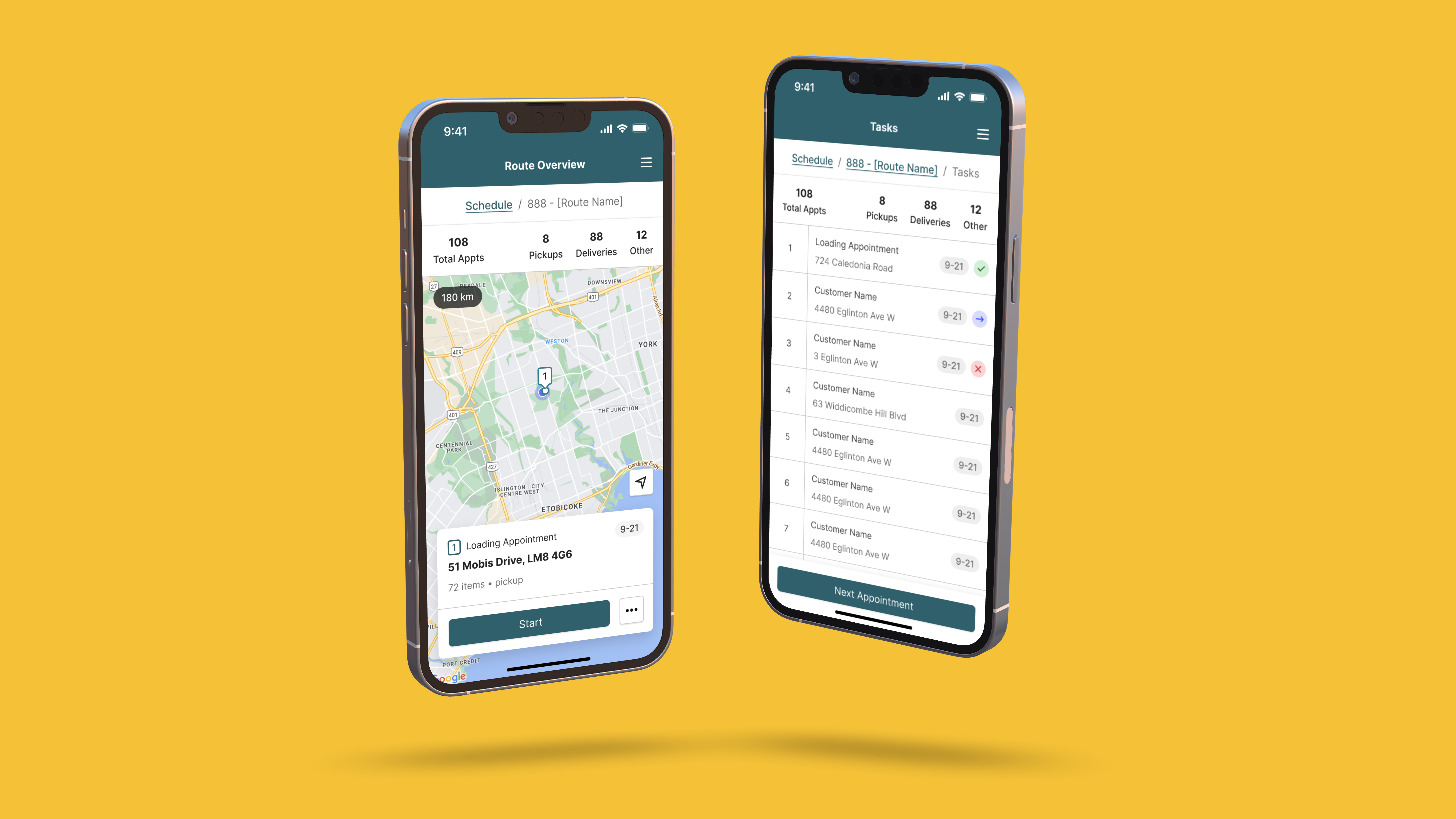
Key problems
- Aging application with increasing volume of support tickets.
- Growing amount of tech and design debt.
- Scaling problem making it almost impossible to integrate new lines of business.
The legacy application was built only for iOS and was deployed outside of the App Store which meant only company devices could run the application and we could not support a BYOD business plan. The solution was to re-think the app from the ground up, and ask ourselves, "What problems does the driver app need to solve?".
We looked at support ticket trends, user interviews, field observations to gain a baseline of what was working, what wasn't working, what workarounds were being employed and what was missing.


We used the discovery done up front to start identifying feature gaps. Some were obvious, things we knew we needed. What wasn't obvious a lot of time was why these obvious things were needed, and what small, almost invisible gaps were present.

Distributing the application through the App Store allowed the business to scale it's service quickly using an asset-light model. We could move into markets quickly, test our offering, and either ramp up or pivot quickly.
Major gaps like a robust proof of delivery flow, or a specific experience to load out trucks were addressed. Small, sometimes more nefarious, issues were also addresses, things like elegantly dealing with overlapping appointments (more than 1 delivery at the same address).
